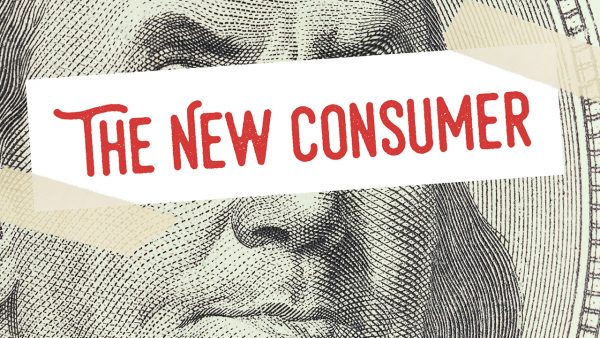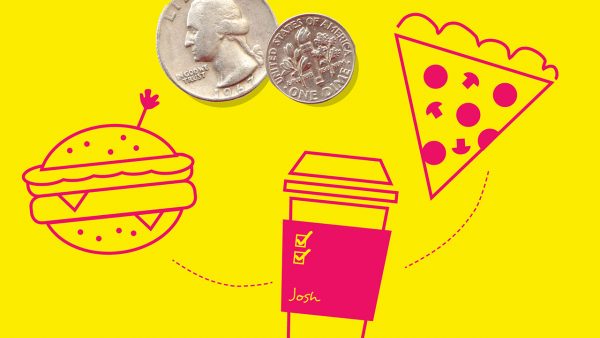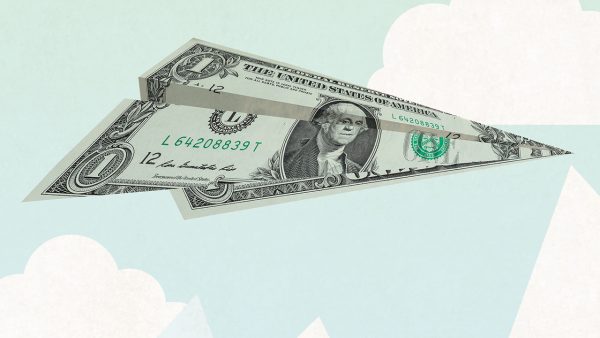August 9th, 2018
The New Consumer
How FinTech has Changed Marketing as a Whole
Here’s the thing about the financial industry: it hasn’t really been disrupted. Ever. Aside from allowing you to do simple online banking tasks. And now, tech companies are creating services and products for a fast-paced audience that appreciates convenience and is always on the go.
And now, after the taste, people want more.
Because finances touch every part of a person’s life, this disruption has shifted expectations for many other non-financial services, as well. So here’s the
real question …
How does this shift in consumer expectations affect non-FinTech marketers?
If you’re in an industry that has not changed much over the decades – insurance, health care, etc. – it’s important to remember that new expectations have been set, and that’s not going to change anytime soon. Consumers want things to be faster, easier, more accessible.
So here are three rules of thumb to keep in mind when considering your future endeavors.
- Make things convenient. The reason FinTech companies have been so successful is because they’ve implemented services and products that fit the consumer’s lifestyle. It’s about the consumer’s convenience, not the other way around.
- Make things easy. FinTech companies – particularly startups – have made everything so insanely fast and easy. Splitting a check? “I’ll just Venmo you.” Planning a trip? “Time for Acorn.” If you’re too complicated, your consumer is going to go somewhere else.
- Meet them where they are. FinTech has made it so simple for people to do almost everything they need to do right where they are. They’ve removed the need to stop into a branch for a simple transaction. Or write a check. Or even use cash. People can do literally everything from their devices. And while this seemed “nice to have” in the past, it’s expected now. So be aware.
Be sure to keep these three things in mind the next time you’re focusing on marketing efforts or rolling out a new product or service. Because if you won’t do it, believe me, there’s a startup company right behind you that will. Consumers know what they want, and they won’t settle for less.
August 9th, 2018
Blockchain … That’s That Bitcoin Thing, Right?
With the recent explosion and fall of Bitcoin’s price, marketing agencies have been eager to know how they can take advantage of the cryptocurrency trend. Some are turning to blockchain technology for answers.
Blockchain’s main implementation is a method for tracking all cryptocurrency transactions, making it nearly impossible to fake a Bitcoin transfer.
But how does this affect a marketing firm?
My analysis: it doesn’t.
Blockchain and cryptocurrencies are exciting to talk about, but until new advancements are made, they’re best left to water cooler talk.
August 9th, 2018
Commerce, She is a Changin’
An overview of the many different commerce solutions available.
As many technologies enter commerce as digital payment methods, payment companies are attempting to reach a very diverse userbase. Aside from the credit cards that most people are familiar with, we’re now seeing Apple Pay, Google Pay, PayPal Pay, emerge as ways to pay for the things we want, as well as some fairly new options.
Venmo, for example, is an acquisition of PayPal and has emerged to fill in a gap of the current payment environment – paying your friends and contacts. Venmo does offer an option for businesses to take payment, but the platform’s slogan summarizes the vision succinctly: “Download to pay, split and share.” The strength in the app lies in the ability to split costs with other users, whether it be dinner, rent or anything else.
Cryptocurrencies, predominantly Bitcoin, are also joining more common payment methods in the e-commerce realm. Where other payment platforms are based on government-backed currency, cryptocurrencies are much less stable. Since its release in 2009, Bitcoin reached a value of nearly $20,000 per coin in December of 2017. Leading up to this peak, businesses started adopting Bitcoin as a payment method with the hope that accepting payments of Bitcoin would be worth more after the transaction. As the price of Bitcoin rose, the cost to exchange Bitcoin for government-backed currency also was increasing.
By mid-December in 2017, popular video game distributor Steam announced that they were no longer accepting Bitcoin as payment for the games on their platform. When Steam started offering Bitcoin as payment, they were paying $.20 per transaction. At the time of removing the cryptocurrency from their platform, a single transaction was nearing $20.
From December 17th to December 22nd of 2017, Bitcoin lost 30% of its value, ending around $14,000. By the middle of May 2018, Bitcoin had fallen to below $9,000 per coin. This volatility has lead to numerous companies, including Reddit, Stripe and Microsoft, to drop Bitcoin as a payment method.
Though cryptocurrencies may not have a stable enough price to justify widespread adoption across e-commerce solutions, Apple, Google, PayPal and Stripe do offer excellent solutions to simplify paying digitally. And, of course, there is another option that just isn’t possible with digital commerce solutions: cash.
According to the Federal Reserve – which admits that, someday, we may no longer need a physical currency – cash is still very important in our economy. According to a study conducted by the Federal Reserve, one-third of an average consumer’s monthly transactions have a total of $10 or less, and the average consumer uses cash for two-thirds of these transactions. For transactions less than $50, consumers will use cash half of the time.
As more and more options become available for consumers, it’s important to note that businesses do not necessarily have to just have one offering for their customers. The previously mentioned payment solution, Stripe, allows payment with most major credit cards, Apple and Google Pay platforms, as well as several additional solutions. It is up to businesses to incorporate as many or as few solutions as they want to accommodate their customers.
August 9th, 2018
FinTech in Action 3,000 Miles Away
A firsthand experience of the convenience that comes with Apple Pay.
I recently vacationed in Iceland and spent just 4000 krona (or about $40 US) in cash. The least amount of cash I’ve ever spent on any vacation in my life. Of course, I spent a lot more money than that, but Iceland is pretty much a cashless society, so I didn’t need actual cash.
In a country of roughly 300,000 people and 800,000 sheep, you can pay using your phone everywhere. From the hot dog vendors on the streets of Reykjavik to the tiny merchants in the middle of nowhere and pay toilets in the countryside, everyone accepts mobile payments. The only place where we used cash was for road tolls, and we only did that because it was easier to just hand the attendant exact change when there was a line of cars behind us.
Before going to Iceland, I rarely used Apple Pay and didn’t really see a benefit. The few times I had tried, it was awkward and slow to use at point of sale. And few places I shopped even accept it. Plus, I worried about the security. But on vacation, I got over it. Apple Pay became my go-to payment option because it was just so simple, easy and quick. At the grocery store, the gas station, the coffee shop, the Viking Museum – anywhere I wanted to go. It let me travel light, with just my phone.
I did have some trepidation, especially because Iceland was one of the countries that suffered the most from the financial crisis. Their three major commercial banks – who, together, were 10 times the country’s total GDP – went bankrupt. Plus, I knew GDPR (European General Data Protection Regulation) officially went into effect the week I was there, and I worried that would somehow mess up something. But the convenience of it was so compelling that I got over my concerns and figured it would all work out. It did. But I did check my banking account app several times during the trip to make sure nothing looked hinky.
Iceland launched contactless mobile payments back in 2013.
And, while there are no issuing banks in Iceland that agreed to the Apple Pay terms, Apple Pay uses the same protocols that are used in the general contactless payments world. Iceland uses Visa Paywave – a technology most Americans have likely never heard of nor used. Paywave is used across Europe, as contactless card-based payments are quite common there. Because most transactions in Iceland are set up to offer contactless card-based payments, by proxy, they also can accept an Apple Pay transaction, just not from their own banks.
Consumers across the globe are warming up to mobile payments. In 2018, for the first time, more than one-third (34.9%) of smartphone users ages 14 and older will use a mobile phone to pay for a purchase at a physical point of sale (POS) at least once every six months. I guess I’m now one of those.
August 9th, 2018
Trust Now. Convenience Later.
3 Tips on How to Instantly Improve Your Commerce User Experience.
Here’s the truth. Online and mobile commerce systems are not perfect and have a long way to go, so there will be days when customers don’t have a great experience and convenience isn’t the most important thing. But that doesn’t mean you have to wait until you’ve achieved commerce perfection before you can start giving the customer what they want.
Imagine you give your customer a piggy bank. Inside the piggy bank, there’s not a single coin. What’s put in there is far more valuable; it’s trust. In the world of m/e-commerce, tap-to-pay and online transactions, you have to understand how to deposit as much trust as you can for those rainy days (those pissed-off-customer moments). How do you do that?
Here are three user experience tips that you can do to help build trust over time – whether for e-commerce and payments or for overall experiences.
1. Clear communication.
“Are you sure you want to delete all 120,540 photos from your library?” Oh shoot. No. Whew. Could you imagine if you lost all your photos with one tap? Or instead of a confirmation page for a purchase, you were charged immediately only to realize later it’s shipping to your old apartment? Yikes. (Amazon 1-click buy button for a later day.) It sounds innate, but don’t forget to communicate with your customers. Tell them clearly what’s about to take place and give them a chance to back out if they need to.
2. Meaningful design.
Your design actually has ROI. A study by Norman Nielsen Group finds that aesthetics do build trust and confidence and lower the impact of those rainy-day moments. Priceline.com does a wonderful job at balancing utility with visual appeal. It places emphasis on visual hierarchy, adds some fun design elements (such as confetti, so you know it’s a good time), but it never trades off the fact that you, their customer, are looking for great deals. In fact, as part of that great experience, they’re reminding you of how much you are potentially saving with the current trip choices you have made. Put some effort into the overall user experience and visual design; it goes a long way to build confidence and, ultimately, trust.
3. Get to know and understand your customer.
Target is famous for knowing their customer intimately. Infamously, in 2012, they mailed a teenage girl an ad for maternity items. The teen’s dad was so outraged that he called to probably rip off someone’s head, but later recanted because she actually was pregnant. This story illustrates how much Target gets to know their customers’ buying habits, to the tune of predicting what they might need. The more a customer feels as though you get them and understand who they are, the more trust will be deposited into that bank.
March 25th, 2018
We All Orbit Around the Mighty Media
 The advertising world would be nothing if it weren’t for the media department. When you watch a TV commercial or hear a radio spot or click on an ad, what you see and hear is the creative. But at the center of all of them is a media team that has asked and answered 100 questions before placing those ads, making sure the right people are watching that TV commercial or listening to that radio spot or clicking that ad. And it’s not just traditional media buys anymore. Factor in digital and social buys, search engine marketing, and artificial intelligence, and it gets complicated. That’s why we’ve asked our media team to share a few tips, trends and insights, so you can be sure you’re getting the most out of your media buys.
The advertising world would be nothing if it weren’t for the media department. When you watch a TV commercial or hear a radio spot or click on an ad, what you see and hear is the creative. But at the center of all of them is a media team that has asked and answered 100 questions before placing those ads, making sure the right people are watching that TV commercial or listening to that radio spot or clicking that ad. And it’s not just traditional media buys anymore. Factor in digital and social buys, search engine marketing, and artificial intelligence, and it gets complicated. That’s why we’ve asked our media team to share a few tips, trends and insights, so you can be sure you’re getting the most out of your media buys.
March 25th, 2018
Decoding Media Speak: A Comprehensive Glossary
Have a hard time comprehending what you’re hearing at the latest media presentation? Help is right below. Here are a handful of media terms that you may or may not know.
The Basics
Impression: When someone sees your ad.
Click: When someone actually clicks on your ad.
Reach: The percentage of people who see your ad.
Frequency: The number of times people see your ad.
CPM (Cost Per Thousand): The price you pay for every 1,000 impressions.
CTR (Click Through Rate): How often someone clicks on your ad.
CPC (Cost Per Click): How much you pay every time someone clicks on your ad.
Digital Dialect
Native Ad: Advertising designed to blend in with surrounding editorial content.
SEO (Search Engine Optimization): What helps your website appear high within a person’s search results.
SEM (Search Engine Marketing): Using paid advertising tactics to help your website appear high within a person’s search results.
Targeting Terminology
Behavioral Targeting: Advertising to someone based on their past behaviors.
Contextual Targeting: Advertising to someone based on where they are likely to be at the moment.
Location or “Geo” Targeting: Advertising to someone based on where they have been/are currently located.
Cookie: Information stored on a person’s computer that remembers his/her preferences, that then advertisers use to target a consumer.
Retargeting: When an advertisement is shown to a user based on actions he/she has recently made on the web (i.e., they visit Zappos.com, next day they see a Zappos ad). NOTE: This strategy uses cookies.
Video Vernacular
OTT (Over the Top) Device: A device connected to or built within a TV to facilitate the delivery of Internet-based video content (e.g., Roku and Playstation Vue).
Connected TV (“Smart TVs”): Television sets connected to the Internet via OTT devices.
Addressable TV: Technology that allows publishers to show different ads to different households while they are watching the same program.
Daypart: How TV and radio outlets describe and sell their inventory (i.e., “Network Prime” from 8:00 p.m. to 10:00 p.m.).
Pre-Roll and Mid-Roll Video: An online video commercial that appears prior to or as a break in video content, respectively.
March 25th, 2018
Media Buyers: The New Social Scientists
At some point, most media buyers have told friends or parents what they do for a living.
“I’m a media buyer.”
“Oh, so you … buy ads. That’s it?”
That’s not it. At all.
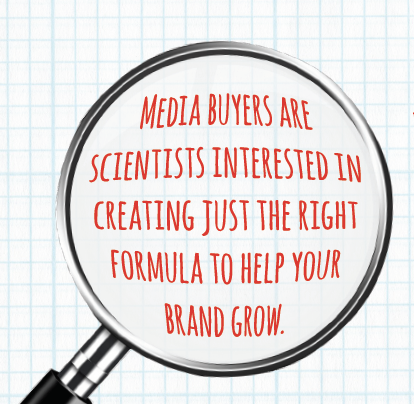
Signing a contract is a very small part of a media buyer’s job. When you see an ad – whether it’s on Facebook, Forbes or Fox Sports 1 – it’s likely that a media buyer did much more than just purchase that ad. They spent hours researching, thinking and negotiating.
Media buyers are investigators. They are scientists interested in creating just the right formula to help your brand grow. Before the first dollar is spent, media buyers have asked dozens of questions to help them make the most informed, effective decision possible. We call these …
The Five Ws … and the one H.
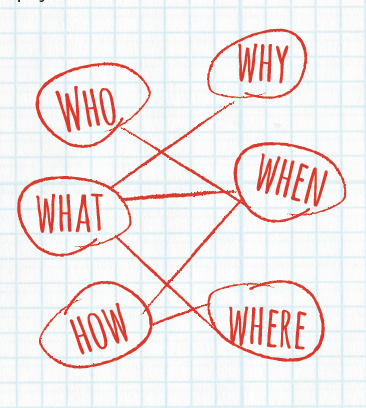 Who is our target? Are they old or young? Nebraskans or New Yorkers? Who do we want to reach first?
Who is our target? Are they old or young? Nebraskans or New Yorkers? Who do we want to reach first?
What does our target read, watch, say, do and think? What do we know about them? Do they prefer podcasts over the radio? What more can we learn about them?
Where does our target turn for advice? Do they trust influential voices in the blogosphere? Do they do their best thinking on the drive to work?
When do our customers make a purchase decision? Or when are they not in the mood for a product pitch? When are they most likely to pay attention to us?
Why should our client invest this money? Why this media channel over that? Why do we think this is the best way to reach our target?
How much is this media worth? Are we getting the best possible deal? Are there other publishers that have a better offering?
And after all these questions are answered, we sign on the dotted line.![]()
March 25th, 2018
Five Steps to Plan a Better Campaign with Your Media Buyer
Imagine your media buyer as the guardian of your media budget, put in place to protect you and get you the most efficient buy for the least amount of money. Working with us ensures that the campaign will run without a hitch and meet its goals. Here are a few steps to make planning with your media buyer successful.
1. Introduce your media buyer into the planning process from the beginning. Media placement can impact the types of creative needed for a campaign, so involving the media buyer early on can provide valuable learnings and help avoid surprising costs, going over budget, and disappointment.
2. If creative is leading the recommendation, it is imperative that creative and media talk. Media can provide capabilities you may not have known were available. We can also help determine the most efficient costs. Without this insight, you could end up spending money on producing something cool that you can’t use.
3. While media buyers are wizards at negotiating, please don’t assume that everything is free. Always tell your buyer what goals and objectives you have. Media will research, leverage relationships and try to get you the best costs to meet the goal.
4. Media buyers are masters at research (aka, secret hackers). We have in-depth knowledge of media channels and audience behaviors. We can tell you the who, what, where and why of what people watch, see, hear and do. Use us as a resource.
5. Remember that ads won’t be seen without a media buy. Wonderful creative is great, but, without a plan for media, no one will see it.
March 25th, 2018
Marketing by Behavior in Paid, Owned and Earned Media
We’ve all heard of paid, earned and owned channels and how each is relevant. Yet, in today’s world, we actively use these channels simultaneously, often without realizing it.
It all starts with behaviors.
Behaviors provide marketers with smarter and more efficient ways to reach and talk to our customers.
Paid media uses audience behavior to be in front of consumers within their moment of need or want. For example, HGTV.com is a natural tie-in for products and services to reach a captive audience in the mindset to update their homes.
Owned channels use behavior to interact with customers – on social channels or through the company website – to create unique content, make personal recommendations or improve relationships.
Earned media, though we can’t control what someone (local news, influencer, etc.) will say, uses behavior insights to guide discussions and build referrals.
Behaviors can help us recognize users across devices and channels. Incorporating those behaviors helps us eliminate some of the guess work and turn our paid, earned and owned into more relevant channels.


